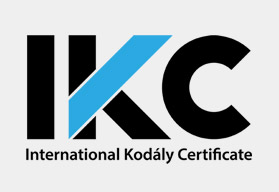CKC Mock exam level 3
CKC Mock exam level 3
Rhythm work:
1. Clap the following two pieces of rhythm with saying out loud the rhythm names:
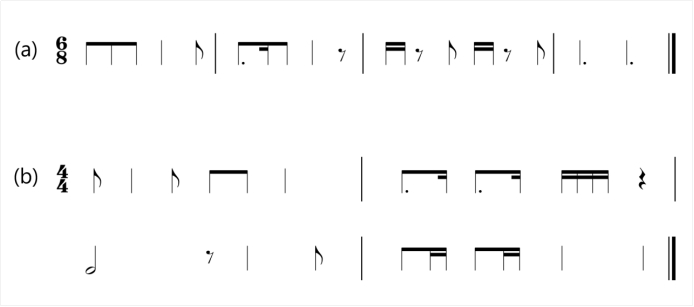
2.Clap the rhythm then memorize it. Now clap it and say out loud the rhythm names from memory:

Scale work.
3.Listen to the following 4 diatonic scales and identify them: Which diatonic scalesdo you hear? Example:(major, harmonic minor, etc.):

4.Sing a natural minor scale with solfa names adding handsigns. (Curwen handsigns).Now sing it with letter names starting from'C’.
Sing a melodic minor scale with solfa names adding handsigns. Now sing it with letter names starting from'G’
Sing a major diatonic scale with solfa names adding handsigns. Now sing it with letter names starting from 'E’:
5a. Sing the three types of the minor scale (natural, harmonic and melodic) from the following letter names: Fis (F sharp), B and D. Sing them first with solfa:
5b. Sing again the three types of the minor scale form 'D' adding your piano play. Start singing the scale, follow with your piano playing in a canon after two beats. Perform it first with solfa, then with letter names. Start with natural minor, then harmonic and lastly melodic minors. Always perform them ascending and descending:
For the melodic minors only sing don’t add the canon part
Melody work:
6. Sight sing this melody with solfa names. (Always keep the pulse with tapping your finger). Start on a comfortable pitch:

Memory work:
7.Listen to the following short melody (5 times). Singit back with solfa names starting on the solfa pitch 'so ':
8.Now write it down with stick notation:

9.Convert it to staff notation, starting on the letter name 'B'. 'B' is your 'so’.

Part work, polyphony:
10.Sight sing first the upper then the lower part of the following piece. Sing them a few times, then sing them with the recordings. Sing them with solfa:

11. Sing both parts (with playing the piano) of the other part. Meaning: When you singthe upper part, you play on the piano the lower part. When you sing the lowerpart, you play on the piano the upper part: Sing wilh sofag .
12.Sight sing the following piece. Sing it a few times then add handsigns (Curwen handsigns) to your singing:
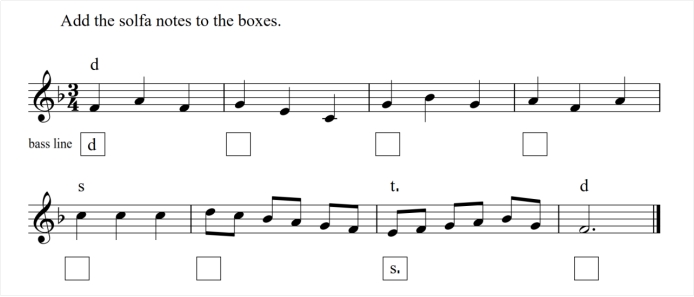
13.Sing the piece with letter names:
14.Now sing the piece again with solfa names and add a base line (with playing the piano) that will suit the melody. Use the following solfa names and functions:
'do’ -Tonic, 'so’-Dominant, 'fa'-Subdominant:
Dictation and notating skills:
15.Name the following 10 intervals (from the diatonic scales). Only write down their names: Example:m2 m7 M7 etc. You will hear each interval twice:

16.Name the following 5 triads and build them from the letter name 'D’: You will hear only root positions. You will hear each triad twice:

17.Write down with stick notation the following melody. You will hear it 5 times:

18. Write down with staff notation the following two-part melody. You will hear it 9 times:
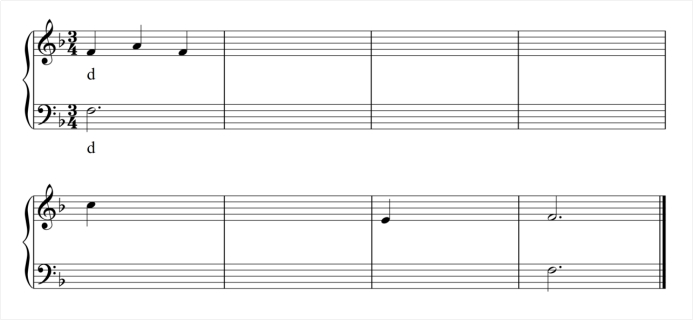
Transformation work:
19a. Transform this melody from major to harmonic minor. Your original starting note 'do' will be now 'la':
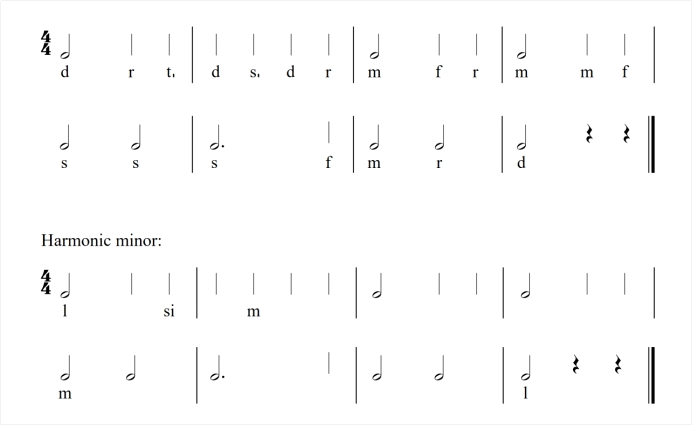
19b. Write the harmonic minor version down on the stave. Your 'la' is 'G’.
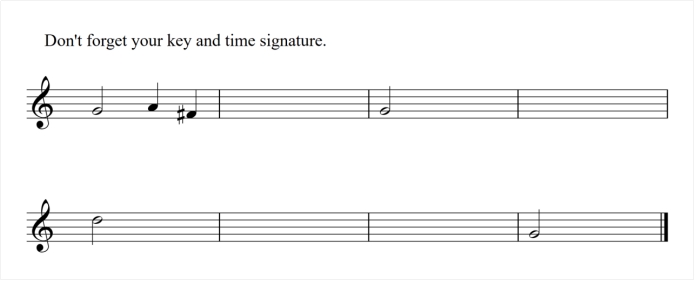
Structure, form, improvising, composing:
20.Create a melody within the given form and toneset. Make sure it's singable and beautiful. Sing it out loud with solfa names then with 'la-la', then add a singable,suitable base line using the functions: Tonic, Dominant and Subdominant.
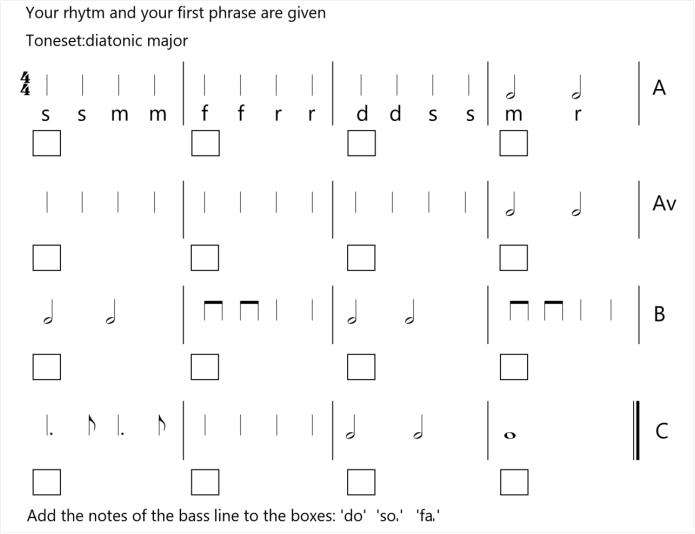
Harmony work:
21. Sing up and down the triads of the major diatonic scale with solfa names using each note of the scale:

22.Sing the triads again and identify all the triads: Major, minor and diminished:
23.Sing the triads now with letter names, starting on 'A' ('A' will be your 'do’):
24.Sing up and down the triads of the harmonic minor scale with solfa names usingeach note of the scale:
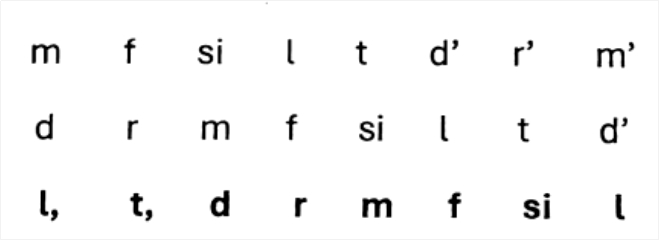
25.Sing the triads again and identify all the triads: Major, minor, diminished and augmented:
26.Sing the triads now with letter names starting on 'C’ ('C' will be your 'la'):
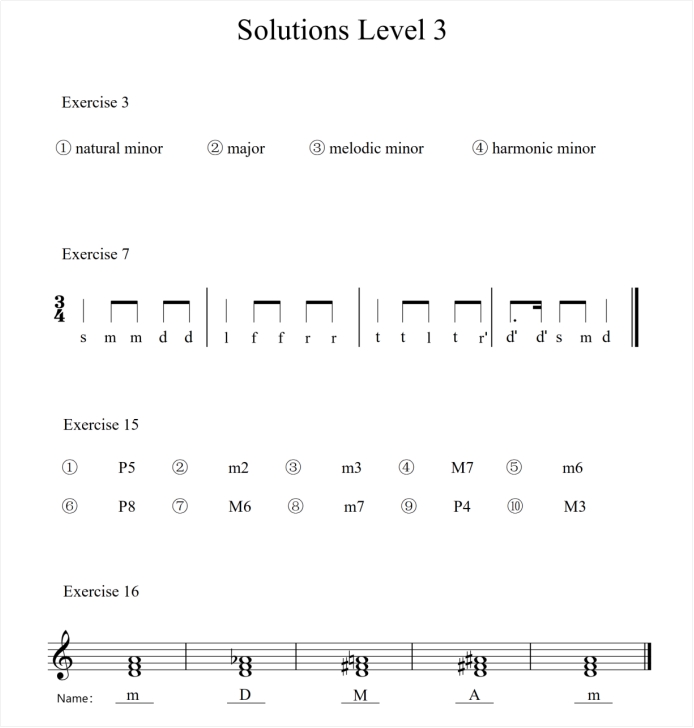
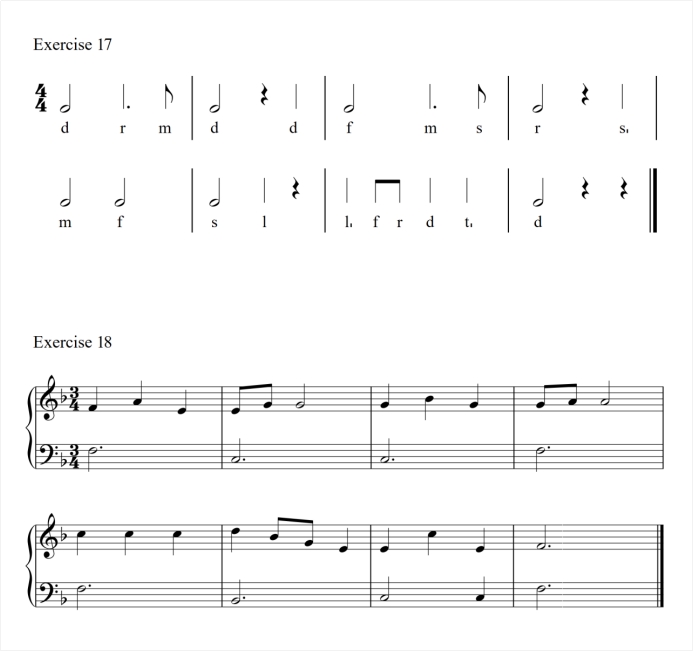
CKC Mock exam level 3
资讯动态
喜讯|中国柯达伊音乐教育研究院正式成为 ISME 机构合作伙伴
喜 讯亲爱的老师、同仁与朋友们:特别致谢:ISME 执委会对中国柯达伊音乐教育研究院的支持与认可。欢迎持续关注我们的最新动态与项目发布。我们欣然宣布——中国柯达伊音乐教育研究院(KMEIC)已通过投票,正式成为 ISME(国际音乐教育学会)机构合作伙伴!这一荣誉,意味着研究院将在全球音乐教育共同体中参与更广泛…
详细
第四届中国柯达伊音乐教育研讨会顺利举行!
恭贺新禧 蛇年大吉HAPPY 2025 NEW YEAR2025年1月,第四届中国柯达伊国际研讨会在青岛成功举办!本次大会以“传承与创新——柯达伊理念在21世纪全球教育中的跨学科应用”为主题,吸引了来自全国的音乐教师、学生和音乐爱好者齐聚一堂。大会聚焦柯达伊理念在主动学习(Active Learning)、批判性思维(Critical Thinking)、合…
详细
第3届中国柯达伊音乐教育国际研讨会圆满举行!
从2023年12月中旬开始的公开课,到2024年1月13、14日由5位专家带来的关于钢琴教学、合唱教学、音乐素养教学的线上课,再到在北京清华附中大兴学校北校区为期3天的线下课的结束,历时一个多月的第3届中国柯达伊音乐教育国际研讨会系列活动终于圆满落幕啦。与前两届研讨会不同的是,此次研讨会除了线上课程,终于有机会开设了…
详细
第3届中国柯达伊音乐教育国际研讨会将于2024年1月底在北京举行!
在李斯特音乐学院柯达伊研究院教授及重量级专家的鼎立支持下,每年一次的中国柯达伊音乐教育国际研讨会又即将如期而至。第3届中国柯达伊音乐教育国际研讨会分为2部分:第1部分为线上课程,上课时间是2024年1月13日至14日,共2天,16节课;第2部分为线下课程,首次线下课将于2024年1月28日至30日与5位专家在北京相聚,共3天(…
详细
【一年仅有一次的福利课】如何使用柯达伊教学法玩转合唱教学与钢琴教学!
大家好!中国柯达伊音乐教育研究院年度大事件又要到来了。“第三届中国柯达伊国际研讨会“即将开启,本届研讨会的主题是“Kodály belongs to all of us” , 将会更加侧重于实用性,如何将柯达伊教学体系在幼儿音乐启蒙,合唱教学体系,钢琴教学上的运用技法拆解给大家。本届研讨会系列活动分为三个阶段:一、2023年12月中旬…
详细

